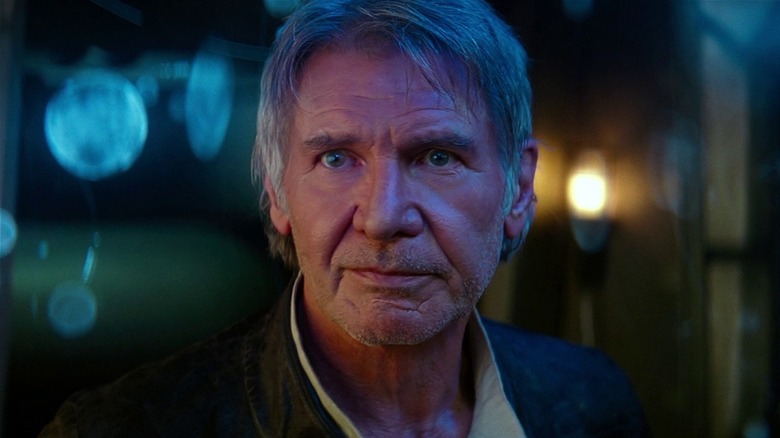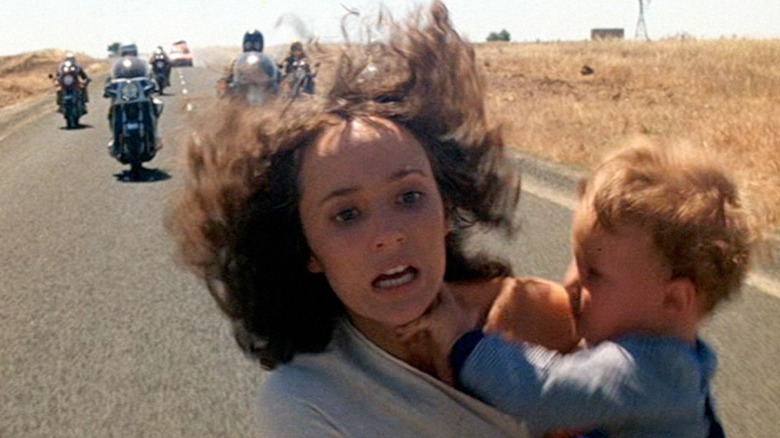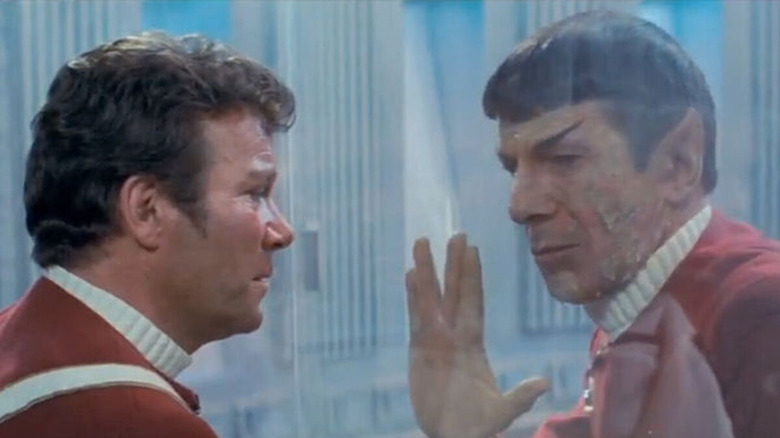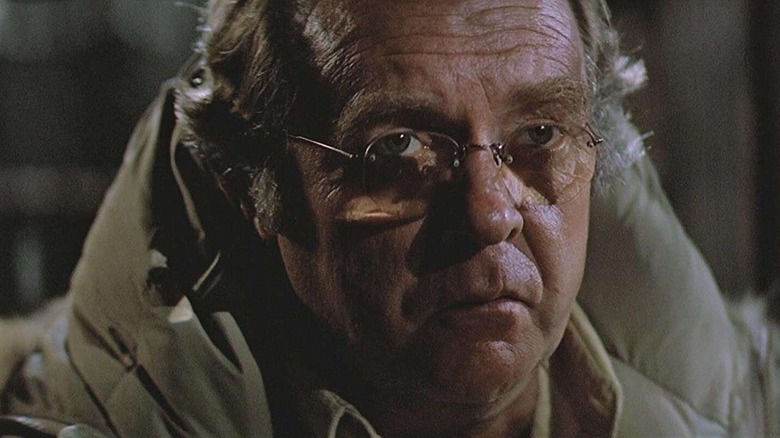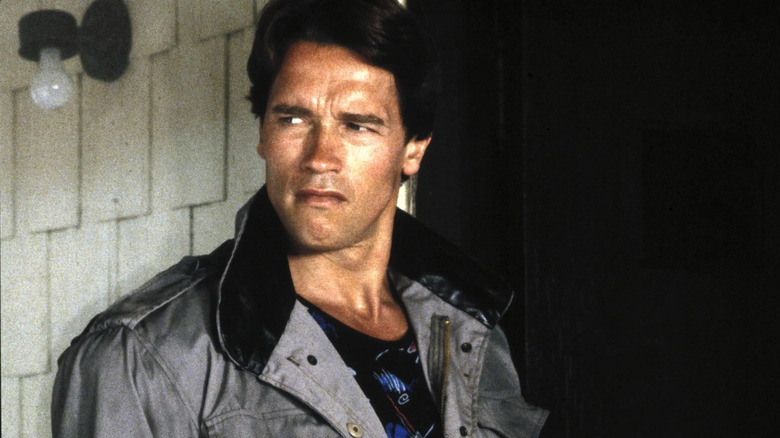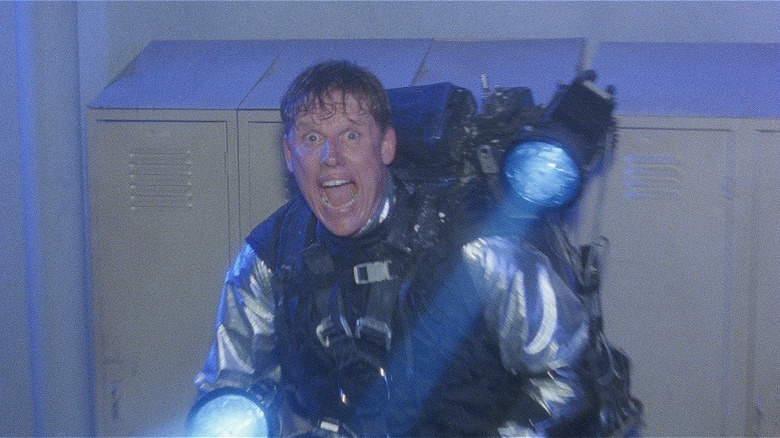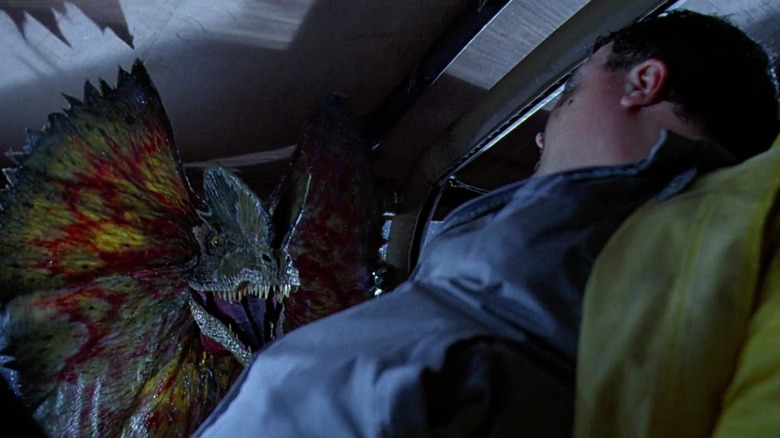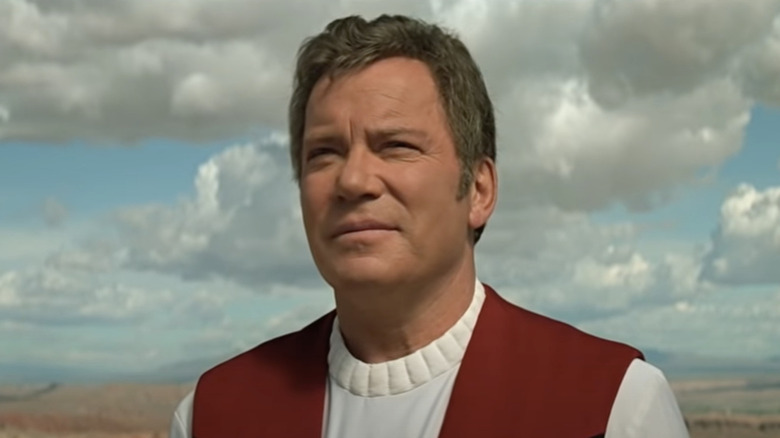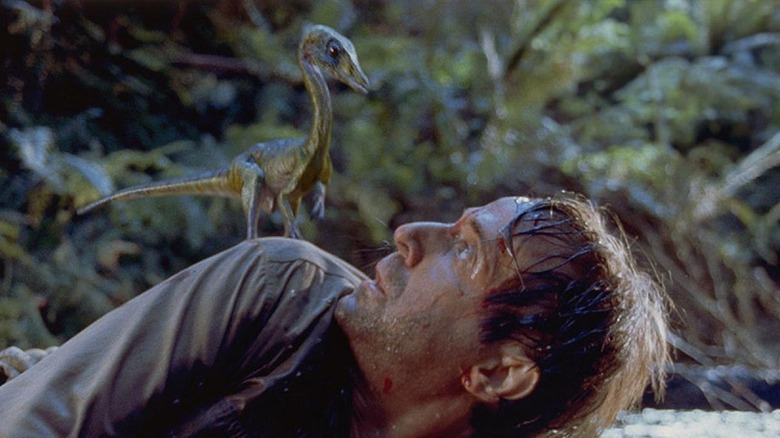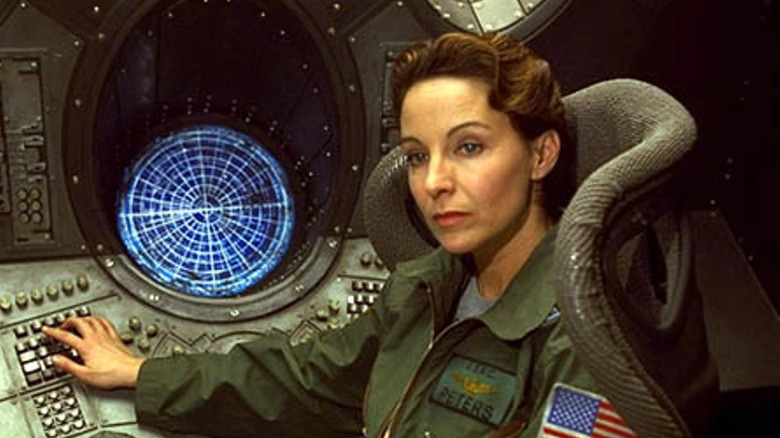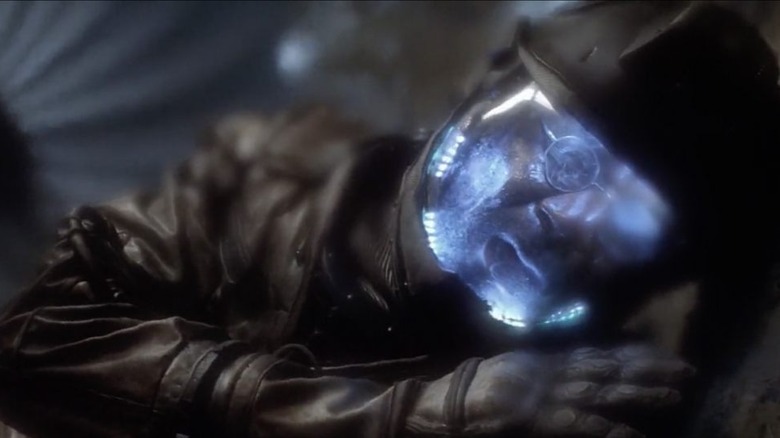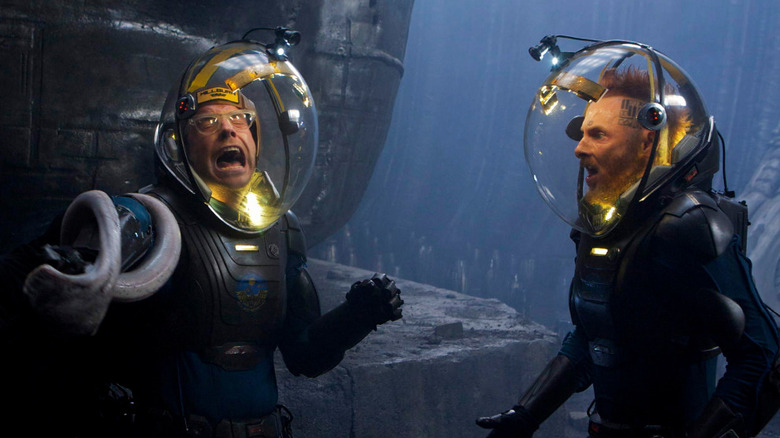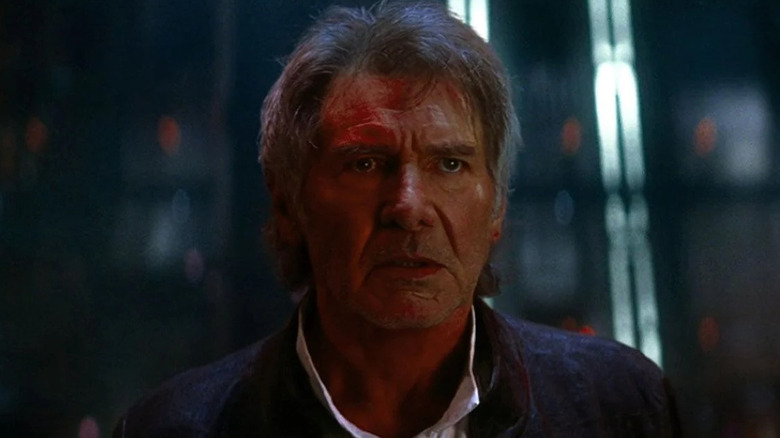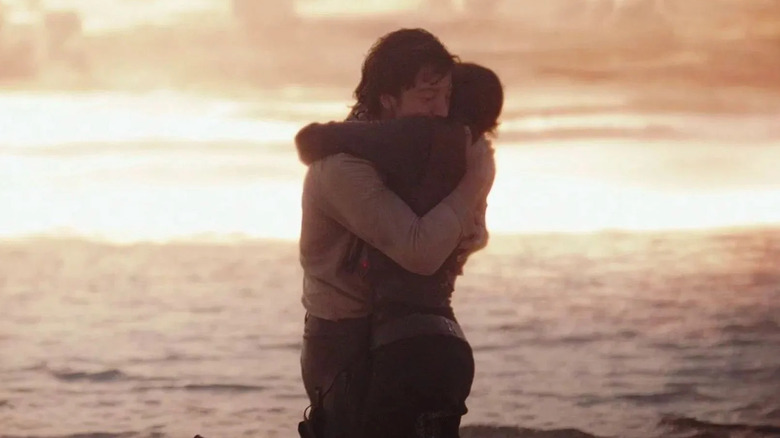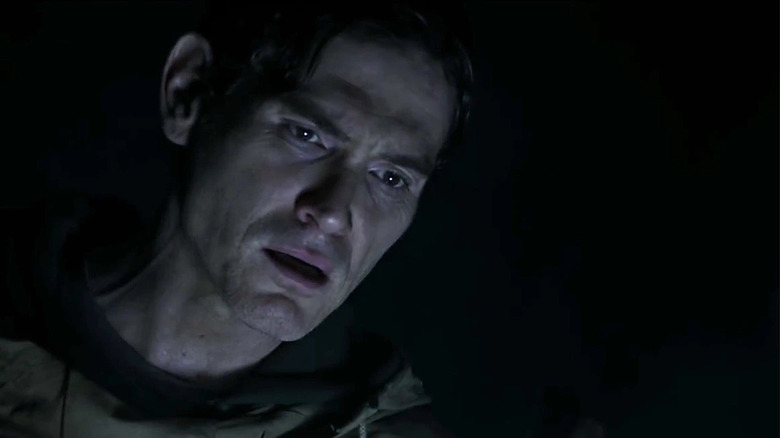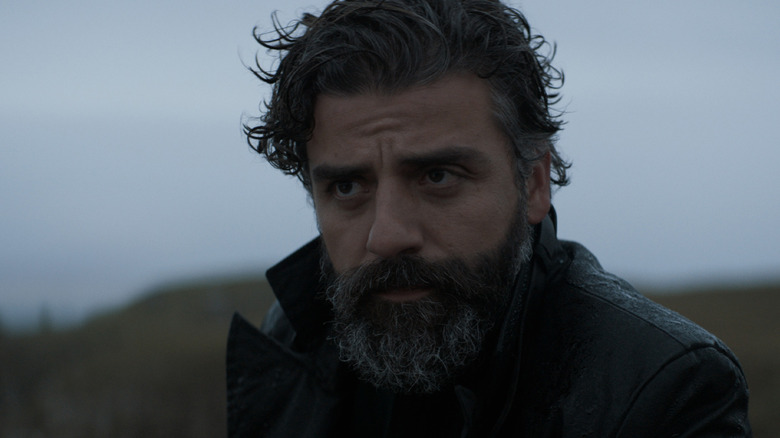Sci-Fi Movie Deaths We Basically All Saw Coming
As it pushes past the realm of conventional possibility, the science fiction genre can be a deadly proposition for its characters. From post-apocalyptic wastelands to menacing otherworldly threats, sci-fi movies raise the stakes by killing off characters facing the unknown. And just because sci-fi often comes with the trappings of advanced technology and philosophical themes, many of these character deaths are still strongly telegraphed to the audience, making an untimely demise all the more expected. The setup and anticipation behind these deaths can be intentional or not; either way, the audience knows someone is about shuffle off this mortal coil.
Here are the sci-fi movie deaths that viewers can see coming a mile away, from characters ignoring obvious horror movie tropes, leading to their doom, to stepping up for one last heroic sacrifice to ensure a happy ending. Not included on this list are the deaths of primary antagonists, which are something of a given in virtually any movie genre as the ultimate payback for their wicked deeds.
Mad Max sets up the hero's wife
With the "Mad Max" tetralogy serving as a de facto paradigm for post-apocalyptic science fiction, one of the more striking things about the original 1979 film is how relatively intact society is in the movie. Police officer Max Rockatansky (Mel Gibson) intends to resign as roving biker gangs terrorize a dystopian Australia, only to cross one particularly nasty gang's path. While the Rockatansky family manages to stay one step ahead of the criminals for most of the film, time runs out for Max's wife Jessie and young son Sprog.
Max prepares to leave his law enforcement career behind to preserve his weathered sanity but, given the whole movie's premise, this would be an exercise in futility. Jessie and Sprog are pursued relentlessly by a gang led by the sadistic Toecutter, forced to go on foot when their van overheats. This results in the bikers running over mother and child on the street, snapping what little restraint Max has left and setting him on the lonely path of revenge that would define him.
Star Trek II: The Wrath of Khan telegraphs Spock's demise
1982's "Star Trek II: The Wrath of Khan" is perhaps the greatest "Star Trek" film of them all, culminating in the death of fan-favorite character Spock. With the death initially intended to be permanent, Spock heroically sacrifices his life to repair the Enterprise's warp drive and allow it to escape to safety in the nick of time. While this moment of cinematic martyrdom still packs an emotional wallop, it's also a scene that audiences anticipated early on.
The idea of Spock dying in "The Wrath of Khan" is gently toyed with at the start of the film, with the character faking his death as part of a routine training exercise. This brush with mortality becomes serious at the film's climax, with Spock quickly moving to repair the Enterprise despite being warned by Dr. McCoy that such a move would be fatal. The fact that Spock's demise was leaked to the public during production similarly set the expectation that the iconic Vulcan was not to survive the film.
The Thing's last victim is its worst liar
John Carpenter's 1982 horror masterpiece "The Thing" expertly escalates the tension and paranoia as a base in Antarctica is infiltrated by an extraterrestrial creature that can take over and mimic any organic life it comes into contact with. As the base's personnel realize what they're up against, they begin to suspect who among them has already been infected by the otherworldly monster, putting everyone on edge. However, one infected member of the team who fools absolutely no one with his deception is Blair (Wilford Brimley), the extraterrestrial's final host in the movie.
Blair is the first person on base to deduce the nature of the malevolent creature and he sequesters himself away after destroying the base's vehicles and radio to prevent the monster from escaping to the outside world. The team speaks with Blair later in an effort to learn more information, only to notice a completely different change in demeanor from their old comrade, opting not to release him from isolation despite his pleas. Blair is later revealed to be infected by the creature, to the surprise of absolutely no one, before his corrupted form is blown up by a well-placed stick of dynamite.
Sarah Connor's roommate is doomed in The Terminator
The 1984 classic "The Terminator" tonally feels almost closer to horror than science fiction, with an unstoppable killer mercilessly slaughtering anyone in its way as it hunts for Sarah Connor (Linda Hamilton). While many of the bodies that the murderous machine leaves in its wake are relatively random, the T-800 (Arnold Schwarzenegger) literally strikes close to home as well: as the android makes a lethal house call to Sarah's residence, it claims the life of Sarah's roommate Ginger and her boyfriend Matt.
The T-800 attacking Sarah's home is quietly set up at the beginning of the movie, with the machine steadily killing anyone with the name Sarah Connor living in the greater Los Angeles area. Ginger dismisses these concerns and prepares to enjoy a romantic evening with Matt, only to be interrupted and murdered by the killer. Anyone who doesn't take caution during a horror movie, despite all the warning signs, is living on borrowed time and "The Terminator" makes this rule clear.
Predator 2 gives its gung-ho hothead a fitting end
After "Predator" featured an extraterrestrial hunter stalking commandos in the rainforest, its 1990 sequel, "Predator 2," takes the action to the urban jungle of Los Angeles. In the midst of police combatting vicious street gangs, the Predator decides to join in on the carnage as part of its violent leisure sport. This leads to the arrival of a special task force hunting extraterrestrials on Earth, led by the gruff Peter Keyes (Gary Busey).
Though Keyes and his squad are outfitted with advanced weaponry, luring the Predator to a nearby slaughterhouse, they still find themselves outmatched by their supposed quarry. Keyes appears to be killed off with his men, only to surface in time to save police officer Mike Harrigan (Danny Glover), with Keyes attempting to freeze his target. This proves to be the final, fatal time Keyes underestimates his opponent, however, with the Predator cutting the special agent in half with a special weapon of his own.
Jurassic Park's traitor pays the ultimate price
Filmmaker Steven Spielberg is the type of storyteller who ensures that bad guys get their eventual comeuppance, and that remains true in his 1993 movie "Jurassic Park." After greedy programmer Dennis Nedry decides to temporarily disable security systems to steal dinosaur embryos for a rival corporation, he learns the price of his malfeasance the hard way. This results in Nedry meeting a particularly gruesome end and one that Spielberg quickly builds to with taut anticipation.
After stealing the embryos, Nedry's flight from the prehistoric theme park is complicated by a severe tropical storm passing over the island. Crashing his jeep as the storm intensifies, Nedry moves to get his vehicle back on the road while encountering a seemingly small dinosaur at the crash site. Initially dismissing the dinosaur as harmless, Nedry painfully discovers the creature possesses venomous spit before being devoured by a larger variant of the same animal when he re-enters his car.
Star Trek Generations brings back Kirk just to kill him off
Just as Spock valiantly gave his life for the greater good on the big screen, albeit temporarily, so too did his best friend James T. Kirk in "Star Trek Generations." The 1994 film featured Kirk meeting his "Star Trek: The Next Generation" counterpart Captain Jean-Luc Picard on a mission to stop the villainous Soran from killing millions. In the end, only one Starfleet officer would walk away from the confrontation, with Kirk paying the ultimate price to save the day one last time.
Kirk's return decades into his future is teased at the start of "Generations," with the character sucked into a mysterious nexus and presumed dead. Picard plucks him from this pocket dimension, with Kirk musing that he has one last ride in him to help his successor triumph. Kirk resigning himself to his low chance at survival proves prophetic, as he takes a lethal tumble from a bridge shortly after he and Picard separate to stop Soran's plot.
The Lost World: Jurassic Park takes its time with a painful death
In returning to the cinematic world of "Jurassic Park" with "The Lost World," Spielberg upped the dinosaur action as two expeditions to an island full of dinosaurs find themselves hunted by the ravenous beasts. This includes one of the most agonizing character deaths in any of the films to date, as a hunter named Dieter Stark is eaten by a pack of tiny dinosaurs. Given the nature of this painful demise, Spielberg drags out the scene like a torture sequence to really make the audience wince.
Stark is already set up to be killed by the group of compsognathus after sadistically electrocuting one, giving the pint-sized dinosaurs a motive for some Jurassic revenge. After committing the ultimate horror movie mistake of separating himself from the main group, Stark falls down a hill and twists an ankle before being beset by the carnivorous pack. Stark is established in the film as something of a master hunter but, in making such obvious and clumsy mistakes, he pays the price for coming off as an amateur.
Event Horizon presents an obvious deathtrap
One of the most bonkers science fiction horror movies around is 1997's "Event Horizon," directed by Paul W.S. Anderson. A rescue vessel investigates an abandoned spacecraft orbiting the planet Neptune, discovering that the entire crew apparently went mad and killed each other. Further analysis reveals that the ship encountered a subspace rift that led to a malevolent entity possessing the spacecraft itself and targeting anyone who boards it.
Anderson's haunted house in space story pushes its characters beyond the limits of their sanity as the rescue team quickly experiences vivid hallucinations that endanger their lives. For Lieutenant Peters, the team's medical specialist, she sees visions of her son, with the apparition luring her to fall to her death. Given the mind-bending nature of the evil entity, even something as innocuous as Peters' son makes her abandon all common sense before walking right into a lethal trap.
The Core's biggest death is a cliched sacrifice
In the years since "Star Trek II," it became a popular Hollywood trope for characters to sacrifice their lives to save their friends while carrying out repairs or dealing with faulty equipment. The World War II movie "U-571" had a crew member give their life to repair the titular submarine in time, while the disaster movie "Dante's Peak" took a more hands-on approach, with a character braving sulfuric water to push a disintegrating rowboat to safety.
The 2003 sci-fi disaster movie "The Core" has its own riff on this well-worn trope as a crew of scientists venture to the Earth's core to restore its rotational movement. A craft capable of withstanding the immense pressure under the Earth's crust is hastily developed but, naturally, malfunctions ensue and require a noble sacrifice to make things right. With the ship failing at the worst possible time, Delroy Lindo's character, Doctor Brazzleton, voluntarily makes the necessary repairs, saving the day at the cost of his life.
Prometheus features some of the most clueless scientists ever
"Prometheus" marked director Ridley Scott's return to the cinematic world he created in 1979's "Alien" with a prequel film exploring humanity's first encounter with aliens connected to the earlier film's xenomorphs. The titular spacecraft featured a team of scientists investigating a faraway planet linked to the Engineers, an extraterrestrial race theorized to have created humanity while visiting Earth. However, once the team reaches their destination, all common sense seems to fly out the window as they are gradually picked off one by one.
There are a number of silly, easily avoidable deaths in "Prometheus" but the most head-scratching in the film takes place relatively early on. After scientists Millburn and Fifield are accidentally locked out of their spacecraft for the night, they discover a serpentine alien residing in the Engineer facility. For reasons that defy all conventional logic, Millburn insists on reaching out and touching the creature, resulting in it quickly killing him and Fifield as the first casualties of the movie.
Star Wars: The Force Awakens fulfills Harrison Ford's wish
It's no big secret that actor Harrison Ford has been vying to kill off his iconic "Star Wars" character Han Solo since at least 1983's "Return of the Jedi." Feeling the character had outlived his usefulness to the overarching narrative, Ford felt Han was better off giving his life in a noble sacrifice. In the end, Ford's desire was finally fulfilled in the 2015 revival film, "Star Wars: The Force Awakens," in a move audiences could see coming a mile away.
"The Force Awakens" reveals that Han and Leia Organa have a son named Ben Solo who has turned to the Dark Side and become a Sith enforcer for the tyrannical First Order. As Han leads a desperate mission to disable the shields protecting the First Order's dreaded Starkiller base, Leia urges him to save their son. This leads Han to confront Ben for one last appeal to his better nature, but the son kills his father in a move that seemingly cements Ben's villainy for good.
Rogue One firmly closes the door on its cast
2016's "Rogue One: A Star Wars Story" explored the Rebel Alliance's triumph in securing the Death Star plans from the Galactic Empire immediately before the events of the original "Star Wars" trilogy. While several familiar faces appear in the film, "Rogue One" predominantly features new characters leading its ensemble cast as the Rebels raid a remote Imperial base containing the plans. And just as quickly as "Rogue One" introduces these new characters to that galaxy far, far away, it explains exactly why none of its main characters appear in subsequent stories.
Over the course of the film's climactic battle, each of the characters are killed off by the overwhelming might of the Imperial counterattack. Each of these deaths is pretty well telegraphed in advance of taking place, often with the respective characters given the chance for a heroic last hurrah. This culminates in the film's leads, Jyn Erso and Cassian Andor, left to watch as a lethal blast from the Death Star approaches, taking a moment to reflect on their Pyrrhic victory.
Alien: Covenant dooms its foolishly trusting captain
While the "Alien" movies have always featured characters innocently shambling right into obvious horror movie traps, one of the most boneheaded of them all was in "Alien: Covenant." The 2017 film served as a sequel to "Prometheus," with the evil android David setting up shop on an Engineer planet to continue his fiendish experiment in perfecting what will become the ravenous xenomorphs. As a crew of unsuspecting explorers are diverted to David's planet, they become his latest set of victims, including their commanding officer Christopher Oram.
After David's treachery is discovered by the intrepid visitors, Oram holds the android at gunpoint and demands to learn what the villain has been up to all along. David leads Oram to a room filled with eggs, insisting that the oblivious captain peer into one of the eggs to see for himself. Despite David being outed as a villain, Oram complies and is attacked by a facehugger, dying shortly thereafter when an infant protomorph bursts from his chest as a triumphant David watches.
Dune's Duke Atreides is guaranteed certain death
Frank Herbert's epic science fiction novel "Dune" introduced audiences to a universe of interplanetary intrigue and shifting alliances, with the first half of the book adapted in 2021's "Dune." One major victim to the story's longstanding rivalries and immoral bureaucrats is Duke Leto Atreides, the head of the noble House of Atreides. Though Leto commands an ocean planet, he is ordered by Emperor Shaddam Corrino IV to replace House Harkonnen in overseeing spice mining operations on the desert planet of Arrakis.
On an intuitive level, Leto is aware that he is being set up to fail and articulates as much, rightfully suspecting the Emperor and House Harkonnen of plotting House Atreides' downfall together. Still, Leto sees the value in taking charge of such a vital operation and, not given a choice in the matter, accepts the imperially mandated task. This proves to be his inevitable undoing as Baron Harkonnen does indeed attack House Atreides on Arrakis, with Leto dying in a failed bid to take Harkonnen with him.
